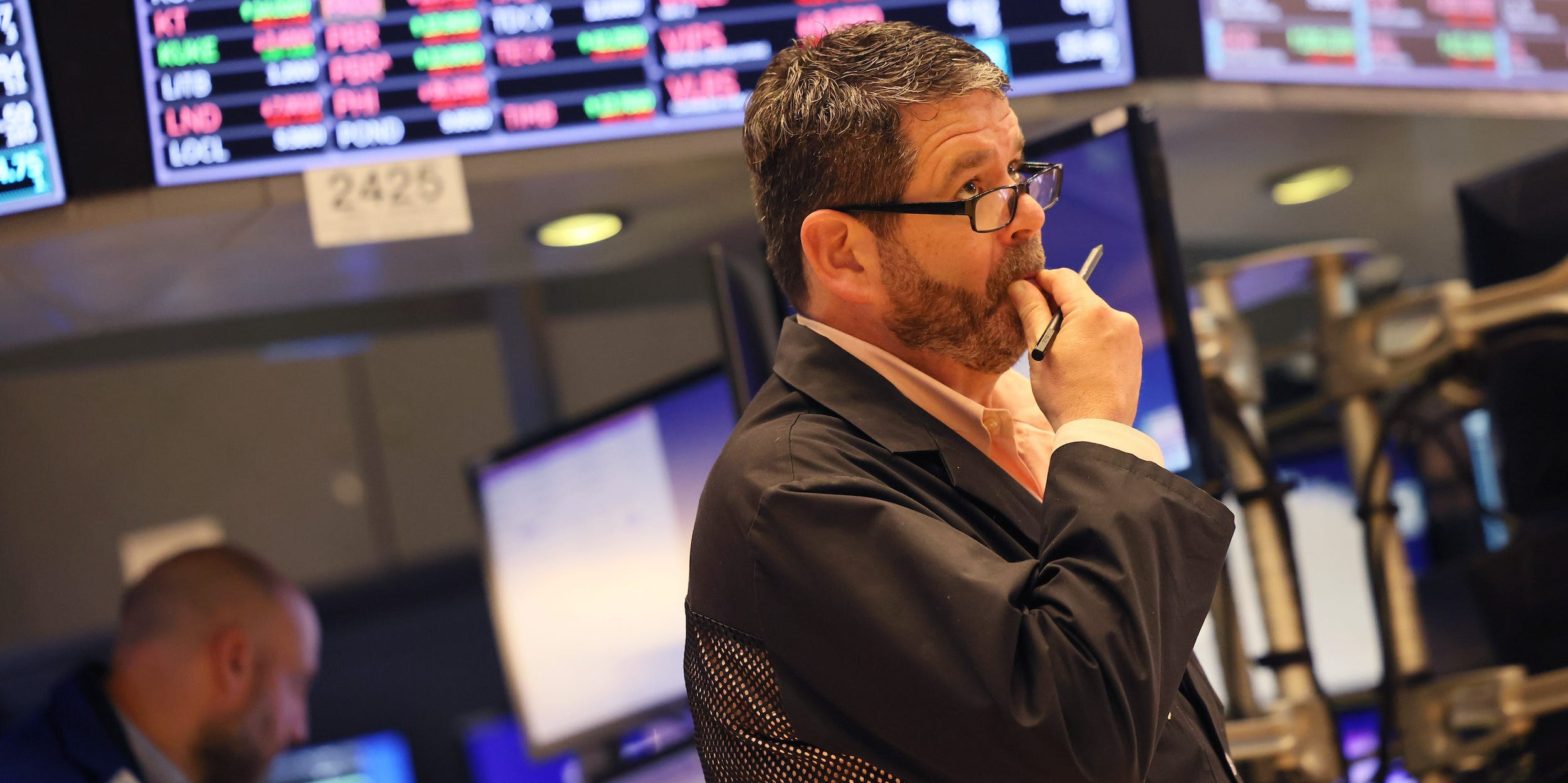Investors should hold off on buying the dip in stocks until earnings begin to decline, according to Bank of America.The bank said the risk of a stagflationary recession means investors should use rallies to sell growth stocks.”Higher discount rates reward firms that produce high profits today, not speculators seeking profits far in the future,” BofA said. Loading Something is loading.
Thanks for signing up!
Access your favorite topics in a personalized feed while you’re on the go.
Investors should wait to get bullish on the falling stock market as inflation and high interest rate concerns continue to roil the valuation norms of the past two decades, according to Bank of America.
The bank said it’s waiting for three key factors to suggest that it’s safe to buy stocks, and so far none of them have happened.
The three missing pieces “to turn bullish” on the stock market include corporate earnings falling at least 9% from current levels, consumer savings falling while the unemployment rate rises, and outflows from equity ETFs, the bank said in a Wednesday note.
S&P 500 companies generated record profits in the second quarter, which means there’s plenty of room for them to fall if the economy is slowing down as many think. Meanwhile, a weakening consumer in the form of less savings and a higher unemployment rate would give the Fed reason to pause its rate hikes.
Finally, broad outflows from stock ETFs would signal “capitulation” among investors, which is usually seen as a contrarian buy indicator. But there’s a lot of work to do on that front, given that there has been $531 billion of inflows into equity ETFs year-to-date, representing the second best year on record, according to BofA.
Before those three things happen, investors should prepare for a scenario in which the next economic recession is stagflationary, and that would ding tech and growth stocks in favor of value stocks. Therefore, any rally in growth stocks should be used as an opportunity for investors to sell and rotate towards value stocks like energy.
“Two decades of low growth, low inflation, low interest rates, and low bond yields created $70 trillion of growth stocks and government bonds prices for that minimal growth regime,” BofA said. But that period could have been an aberration rather than the new normal.
“Regime change happens in fits and starts, not a straight line. There will be rallied in oversold long-duration assets like tech and Treasuries, useful for rotation to energy and value,” BofA said, adding “atoms > bits.”
The bank’s confidence in a stagflationary economic environment is derived from the fact that on average it has taken 10 years for a developed economy to return to 2% inflation once the 5% threshold is breached. Inflation peaked at 9.1% in June, and though it has cooled in recent months, it still remains close to its 40-year highs.
That sets the economy up for a period of stagflation if growth remains at or below its long-term trend. And that means interest rates are likely to stay higher for longer, which again favors value stocks over growth stocks.
“Higher discount rates reward firms that produce high profits today, not speculators seeking profits far in the future,” BofA said.
The bank ultimately sees fair value for the S&P 500 at 3,000, which is derived from a 15x price-to-earnings multiple on earnings per share of $200.
